- Author Jason Gerald [email protected].
- Public 2024-01-19 22:11.
- Last modified 2025-01-23 12:04.
Corrupt or corrupted files can make a well-prepared presentation messy. There are several ways to load a corrupt file, including: moving it to a new location, extracting the slides from within the file itself, and running PowerPoint in Safe Mode. If you can recover part or all of the corrupted presentation, use the recovered slides to create a new file.
Step
Method 1 of 5: Moving the Presentation to Another Place

Step 1. Open the folder where the corrupt presentation file is stored
Launch File Explorer and locate the folder where the presentation file you want to open is stored.
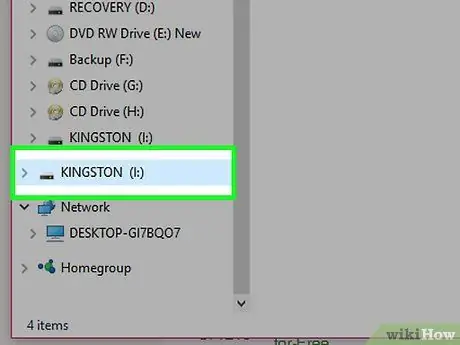
Step 2. Plug in a flash drive (USB flash drive) or other storage media
The basic idea in this method is to move files from a possibly corrupt drive to another normal storage medium. If the presentation is already on a flash drive, you can copy it to your computer drive. If the presentation files are on your computer's hard drive, copy the files to a flash drive.

Step 3. Open the folder on the second storage media
You can use any location on this second storage media. All you have to do is move the file from the first drive to another.
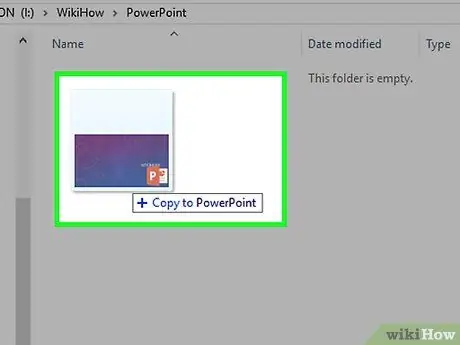
Step 4. Click and drag the file from its original location to the second drive
The file will be copied to another drive.
If you can't copy it, the file or drive is corrupted
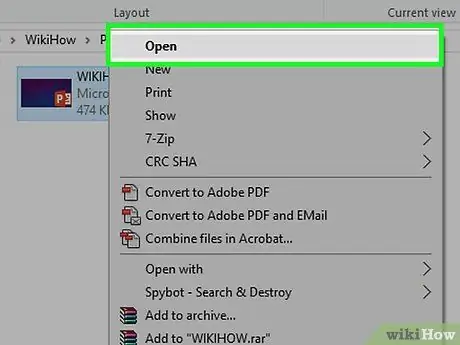
Step 5. Open the copied file to a new location
Once the files have been copied, try opening them from the new location where you saved them on the second drive. If the original save location was corrupt, you may now be able to open it normally.
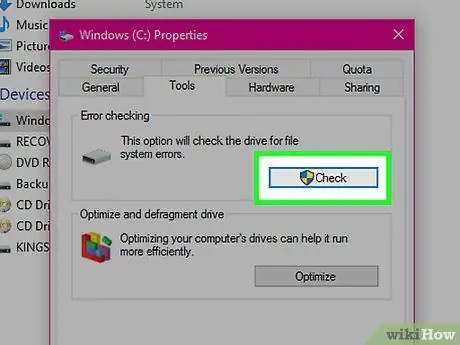
Step 6. Check the original save location for errors
If the file runs fine in the new location, try fixing the error that occurred on the disk where the original file was stored.
- Windows - Open the Computer/This PC window, then right-click the problematic drive. Click " Properties ", select the " Tools " tab, then click " Check now " in the " Error-checking " section. Check both boxes, then click "Start".
- Mac - Run the Disk Utility program in the Utilities folder. Select the problematic drive in the left menu, then click " First Aid ". Wait for the scan to complete.
Method 2 of 5: Inserting Slides into a New Presentation

Step 1. Run PowerPoint
One of the quickest methods for dealing with corrupt presentations is to import them into a blank presentation. This way, you may be able to save some or all of the slides. Start by running PowerPoint without loading the file.
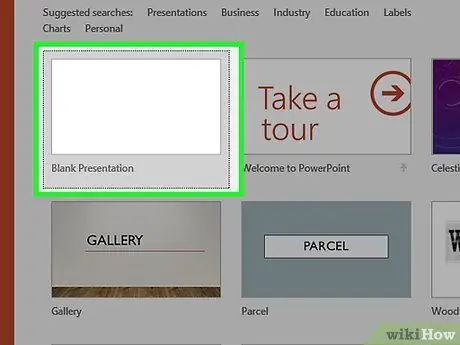
Step 2. Create a new blank presentation
When prompted to select the type of file you want to create or load, select the Blank presentation option.
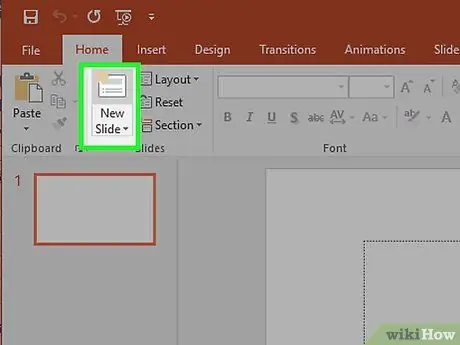
Step 3. Click the “New Slide” button which is on the Home tab
It's on the far left of the Home tab. Don't forget to click the button for the menu to appear.
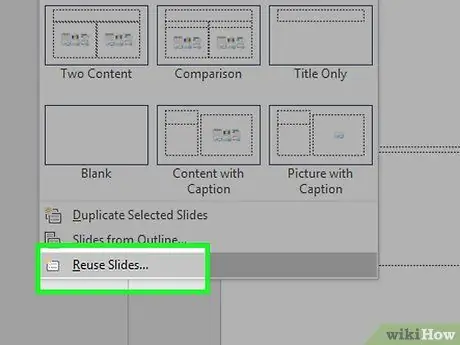
Step 4. Select "Reuse Slides" at the bottom of the menu
A sidebar will open on the right side of the screen.

Step 5. Click "Browse ", then "Browse File"
A file browser (file browser) will be opened.
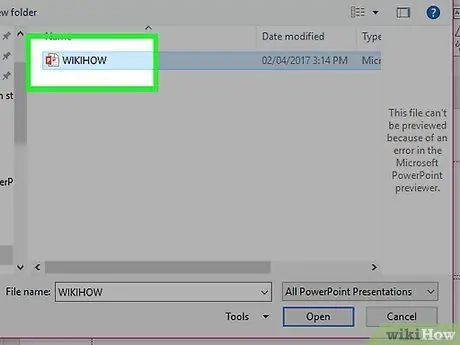
Step 6. Select the corrupt PowerPoint presentation file
Use a file browser to search for files. Select the desired file, and open the file by clicking " Open ".
If PowerPoint is able to extract the slides from the corrupt file, a preview window will display them

Step 7. Right-click one of the slides in the preview, then click "Reuse All"
All slides from the corrupt file will be imported into a blank presentation.
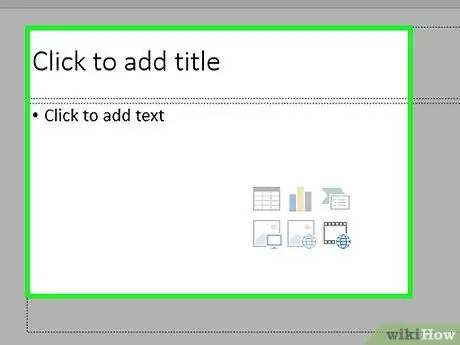
Step 8. Check the newly imported slide
If the slides are imported properly, you can open the presentation and view the entire slide. PowerPoint may not be able to recover the entire slide from the corrupt file.
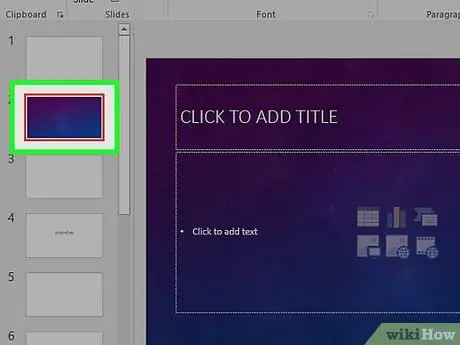
Step 9. Import the slide master from the corrupt presentation if the imported slides look abnormal
If the slide doesn't display normally when you add it to a blank presentation, work around this problem by loading the corrupt presentation in the form of a theme template):
- Click the File or Office button, then select "Save As". Save a copy of the recovered presentation under a different name for backup.
- Go to the Design tab, click "More" in the "Themes" section, then click the "Browse For Themes" link.
- Select the damaged presentation file, then click " OK ". The slide master will load from the corrupted presentation and the theme will be restored.
- Switch to a restored backup copy of the presentation if the process has stopped.

Step 10. Save the recovered presentation
If you have made sure that the slides have been imported correctly, save the new presentation file. Then, you can load the new presentation without any problems.
To be on the safe side, save the new presentation in a different place from where the original file was saved
Method 3 of 5: Using PowerPoint Viewer (Windows)

Step 1. Download the PowerPoint Viewer installer
This free program made by Microsoft can be used to view PowerPoint files. Maybe you can use it to view corrupt presentations. This program is not available for Mac.
Download PowerPoint Viewer on the Microsoft site. Select the desired language, then click "Download"

Step 2. Double click the downloaded file to run the installer
The PowerPoint Viewer program will begin installing.
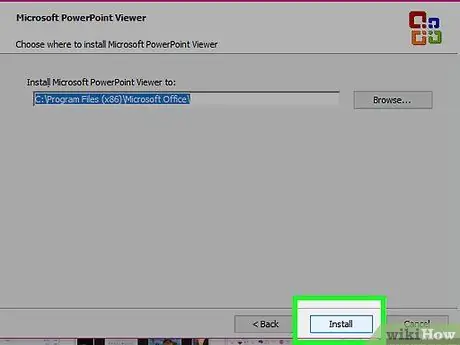
Step 3. Follow the given instructions to install the program
You can leave the installation settings by default and wait for the installer to finish installing the Viewer.
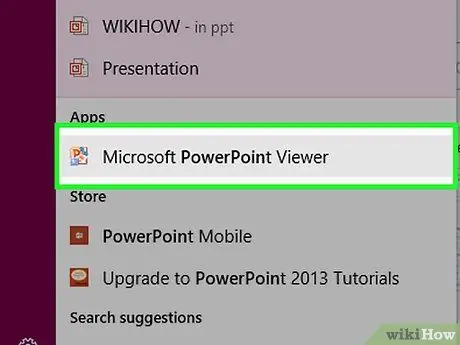
Step 4. Launch PowerPoint Viewer once you have finished installing it
This program is in the Start menu.

Step 5. Browse and open the corrupt presentation file
If the file can be opened in this program, then your PowerPoint is corrupt, not the file. If this is the case, you may need to reinstall the PowerPoint program.
For more information, check out the wikiHow article on how to install PowerPoint
Method 4 of 5: Opening PowerPoint in Safe Mode (Windows)

Step 1. Open the Start menu or screen
You can try loading PowerPoint in Safe Mode. This will disable a number of features, but may be used to properly open a presentation.
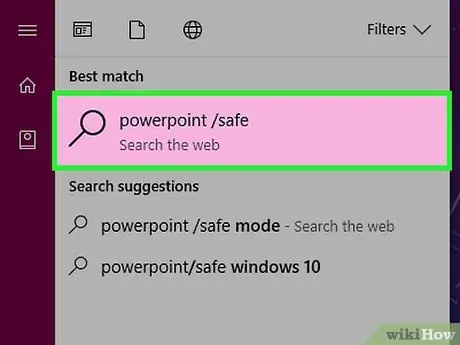
Step 2. Type powerpnt /safe, then press Enter
A PowerPoint containing a blank presentation page will run.
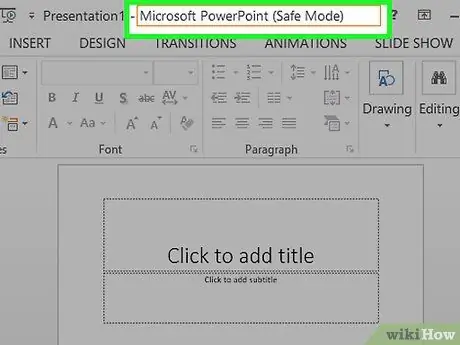
Step 3. Make sure that you are indeed in Safe Mode
Notice the top of the PowerPoint window. There should be the words "(Safe Mode)" at the end of the title.
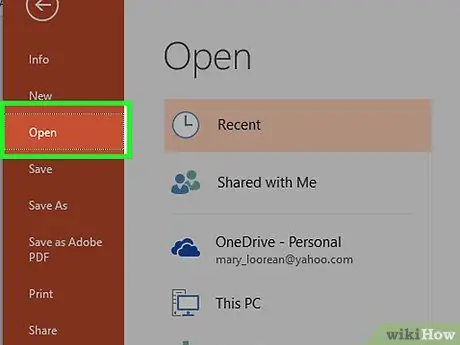
Step 4. Try opening the corrupt file
Click the menu or File tab, then select "Open". Browse through the corrupted files and see if you can open them in Safe Mode.
If the presentation can be opened in Safe Mode, but in an abnormal state, you may need to reinstall PowerPoint. For more information, check out the wikiHow article on how to install PowerPoint
Method 5 of 5: Using Online Services
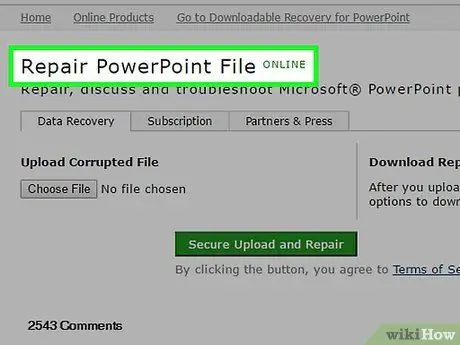
Step 1. Visit a PowerPoint recovery site on the internet
There are a number of online services that can be used to repair corrupt PowerPoint files. Don't use it to recover files that contain sensitive material because you're essentially giving the file away to someone else. Some of the popular sites include:
- online.officerecovery.com/powerpoint/
- onlinefilerepair.com/repair
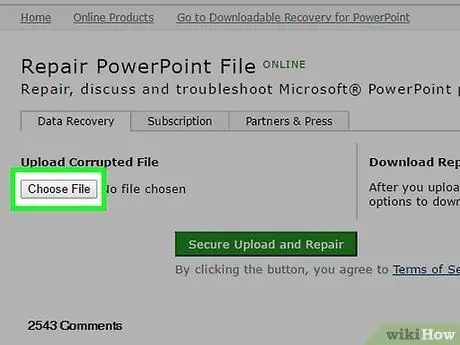
Step 2. Upload the corrupt presentation file
Click the "Choose File" button, then locate the corrupt presentation file. If you've found it, upload it to an online repair service.
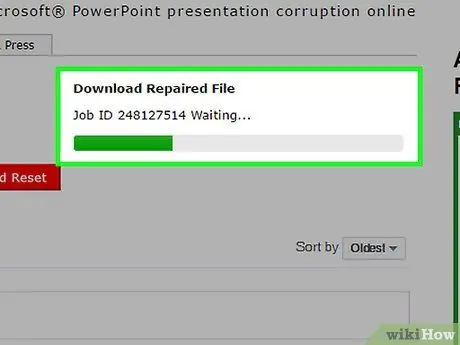
Step 3. Wait until the recovery process is complete
The time it takes depends on the queue at the service, but is usually no more than a few minutes.
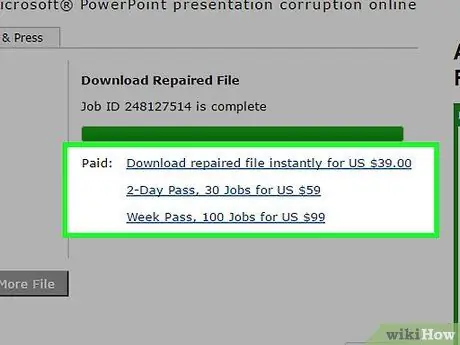
Step 4. Open the email containing the recovered files
When the restore is complete, you will be sent an email with a link to view the recovered slides. Depending on the service used, the link may be directly available on the site.
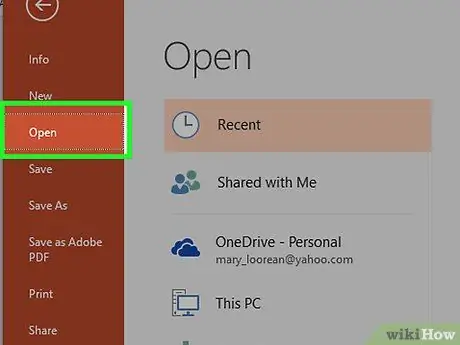
Step 5. Check the recoverable slides
The recovery service may not be able to restore the entire presentation, but you will receive slides that may still be extractable.






